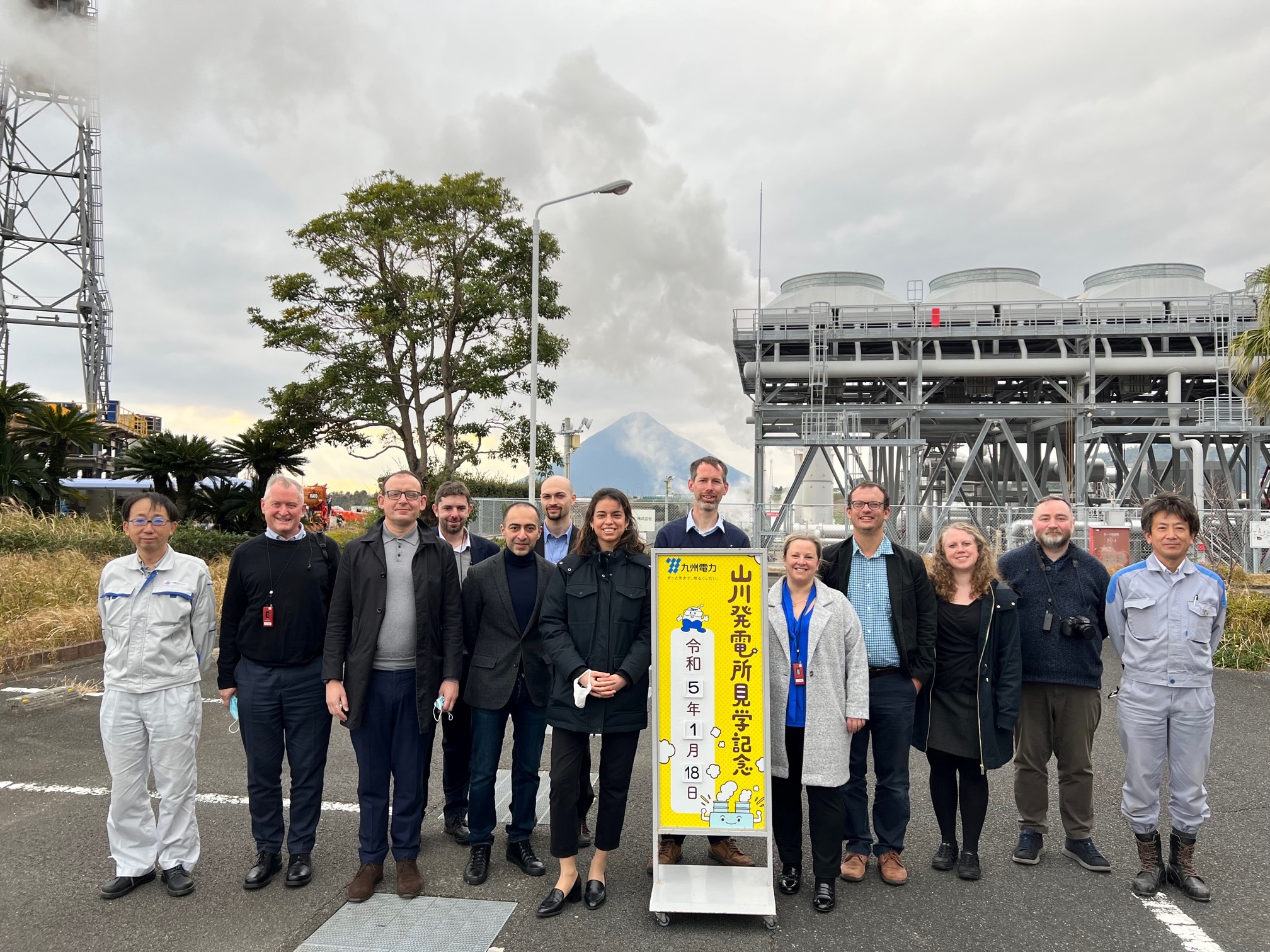
Martin, standing behind the yellow sign, JST 2023 in Kagoshima Prefecture
A year has passed since I travelled to Tokyo and sub-tropical Kagoshima on the Japan Study Tour to learn about its local government sector. There are so many warm memories of the people we met and the sites we visited, but, 12 months on, what are the themes that really stand out?
Inevitably, contrasts between our two countries figure strongly.
England remains a highly centralised country, with limited efforts to devolve power from Whitehall to town halls continuing in a piecemeal way. The local government landscape is an ever more confusing patchwork of different types of local authorities whose powers, structures and responsibilities vary from one area to the next.
Compare this with Japan, where local government enjoys high levels of autonomy within a uniform system and protected by the national constitution. And while for many years this autonomy was in practice restrained, in recent decades there has been a concerted effort to deliver real local freedom.
The study tour’s theme was carbon neutrality. It came in a year when the UK’s national effort to achieve net zero has become increasingly politicised. Policy reversals in Westminster have been driven by short-term political expediency, and risk undermining the long-term goal. Local government remains at the vanguard, but the extremely ambitious net zero target dates set by many councils will be hugely challenging to meet.
In Japan, we visited local authorities that were working towards deadlines that were sometimes two decades behind their UK counterparts, but whose systematic, long-term planning made them appear more achievable, and innovative approaches on everything from cooperation between councils at different ends of the country to comprehensive campaigns to change the behaviour of local residents.
Time will tell which approach will contribute most to net zero: maybe the early targets of British councils will not be met, but will galvanise faster progress, or maybe Japan’s slower but more methodical strategy will be more effective.
The study tour also had a more personal significance for me.
It is almost two decades since I moved to Japan, joining the JET Programme to teach English in a small rural municipality. They were three of the best years of my life, but I had not been back since 2010.
So after the study tour’s formal programme concluded, I travelled to Yamagata prefecture in the frozen north, returning to my old hometown of Nanyo City. It was part work – I interviewed the mayor, and part pleasure – I caught up with friends, colleagues and pupils.
The trip helped fill in some of the blanks from my time in the city. Although I was employed by the city council, and had a career in local government in England, I had taken little interest in municipal affairs. Studying Japanese, making friends and learning how to teach occupied enough of my time. But in the years since I have regretted not being more curious about local politics.
My conversation with Mayor Shiraiwa helped rectify this, and made the consequences of Japan’s well-known demographic challenges all too tangible.
Back in my day, Nanyo’s population stood at 37,000; now it is less than 30,000. The seven junior high schools I had taught at had already been reduced to just three, leaving four villages without a vital means of sustaining community life. Now, the mayor said, the already depleted number of elementary schools would be cut yet further. These were the schools I loved the most – small and friendly, their pupils shy and innocent – passing on village traditions from one generation to the next.
More widely, the mayor lamented how the thinning out of younger generations made it difficult to pass on businesses and traditions, and was frank about how the municipality cannot use its limited resources to prioritise the survival of its smallest, remote communities.
But the autonomy reserved for local government in Japan gives him the tools to do things it is hard to imagine an equivalent district council in England attempting. He has a three-point plan that uses financial incentives to try to increase the birthrate; he is subsidising the expansion of local businesses; he has a PR strategy that uses the city’s distinctive spicy ramen to attract tourists. I hope his efforts succeed.
Catching up with old friends over noodles, coffee or beer, we soon slipped back into conversations about the local kendo and judo teams, how the teachers and city hall staff we knew were faring, and the successes and failures of the bars, shops and onsen I used to know.
Returning after so many years, I was struck by how tightly drawn the circumference of my life in Japan had been, how local my horizons. But also how, in the 16 years since I returned to England and moved from job to job and place to place, I have yet to feel as rooted in a community as I was in Nanyo City.
Japanese local government: Plotting a route to a carbon-neutral 2050
Japanese local government: Comprehensive autonomy
Japanese local government: ‘A localist’s paradise’
Japanese local government: the mayor trying to grow the economy – and the population
Learning from local autonomy in Japan
Japanese councils have more tools to tackle society’s biggest problems
Martin George
Deputy Editor, Local Government Chronicle
JET Programme participant, 2004-2007
Top photo: By Altomarina – Self-photographed, CC BY-SA 3.0, https://commons.wikimedia.org/w/index.php?curid=11757545

